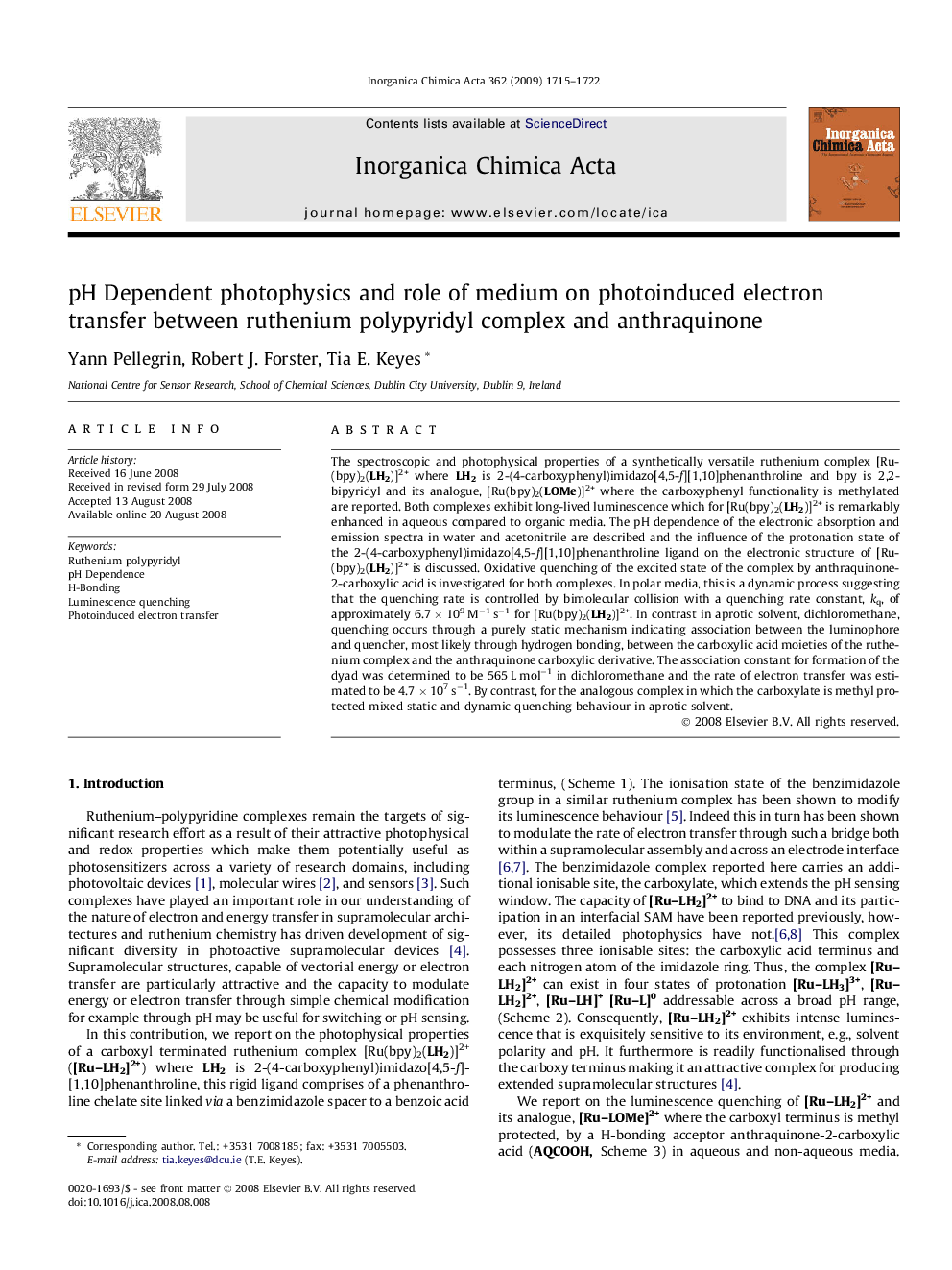| کد مقاله | کد نشریه | سال انتشار | مقاله انگلیسی | نسخه تمام متن |
|---|---|---|---|---|
| 1311370 | 975319 | 2009 | 8 صفحه PDF | دانلود رایگان |

The spectroscopic and photophysical properties of a synthetically versatile ruthenium complex [Ru(bpy)2(LH2)]2+ where LH2 is 2-(4-carboxyphenyl)imidazo[4,5-f][1,10]phenanthroline and bpy is 2,2-bipyridyl and its analogue, [Ru(bpy)2(LOMe)]2+ where the carboxyphenyl functionality is methylated are reported. Both complexes exhibit long-lived luminescence which for [Ru(bpy)2(LH2)]2+ is remarkably enhanced in aqueous compared to organic media. The pH dependence of the electronic absorption and emission spectra in water and acetonitrile are described and the influence of the protonation state of the 2-(4-carboxyphenyl)imidazo[4,5-f][1,10]phenanthroline ligand on the electronic structure of [Ru(bpy)2(LH2)]2+ is discussed. Oxidative quenching of the excited state of the complex by anthraquinone-2-carboxylic acid is investigated for both complexes. In polar media, this is a dynamic process suggesting that the quenching rate is controlled by bimolecular collision with a quenching rate constant, kq, of approximately 6.7 × 109 M−1 s−1 for [Ru(bpy)2(LH2)]2+. In contrast in aprotic solvent, dichloromethane, quenching occurs through a purely static mechanism indicating association between the luminophore and quencher, most likely through hydrogen bonding, between the carboxylic acid moieties of the ruthenium complex and the anthraquinone carboxylic derivative. The association constant for formation of the dyad was determined to be 565 L mol−1 in dichloromethane and the rate of electron transfer was estimated to be 4.7 × 107 s−1. By contrast, for the analogous complex in which the carboxylate is methyl protected mixed static and dynamic quenching behaviour in aprotic solvent.
[Ru(bpy)2(LH2)]2+ where is LH2 is 2-(4-carboxyphenyl)imidazo[4,5-f][1,10]phenanthroline exhibits four protonation states whose photophysical properties are solvent dependent. Quenching of [Ru(bpy)2(LH2)]2+ by anthraquinone-2-carboxylic acid switches from a static unimolecular process in aprotic solvent to dynamic bimolecular quenching in aqueous medium. The static process is attributed to formation of a H-bonded dyad between donor and acceptor.Figure optionsDownload as PowerPoint slide
Journal: Inorganica Chimica Acta - Volume 362, Issue 6, 20 April 2009, Pages 1715–1722